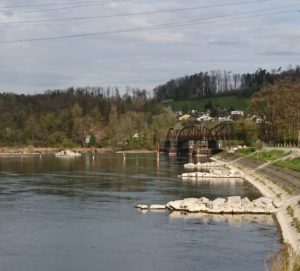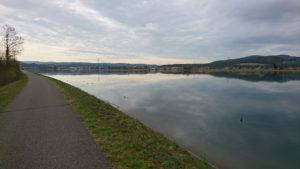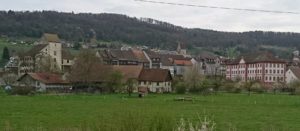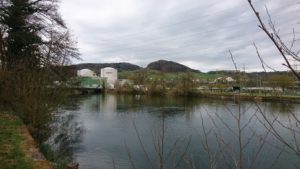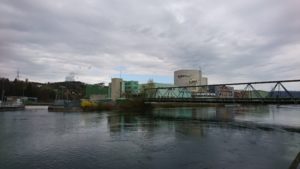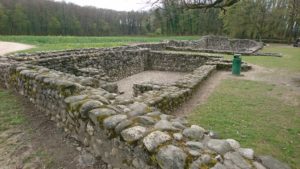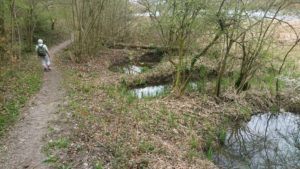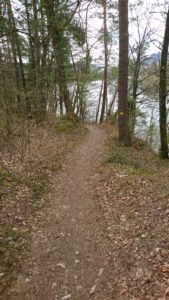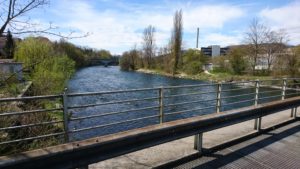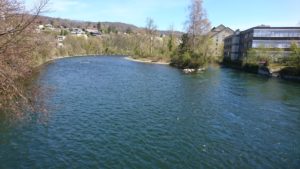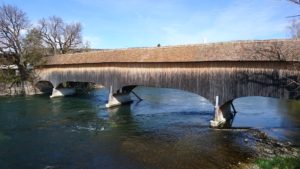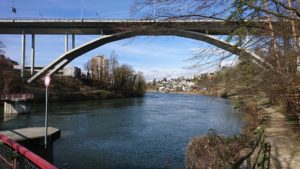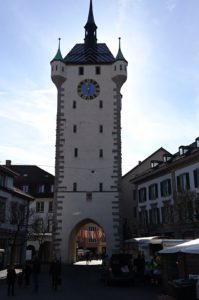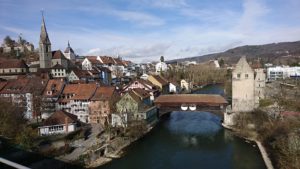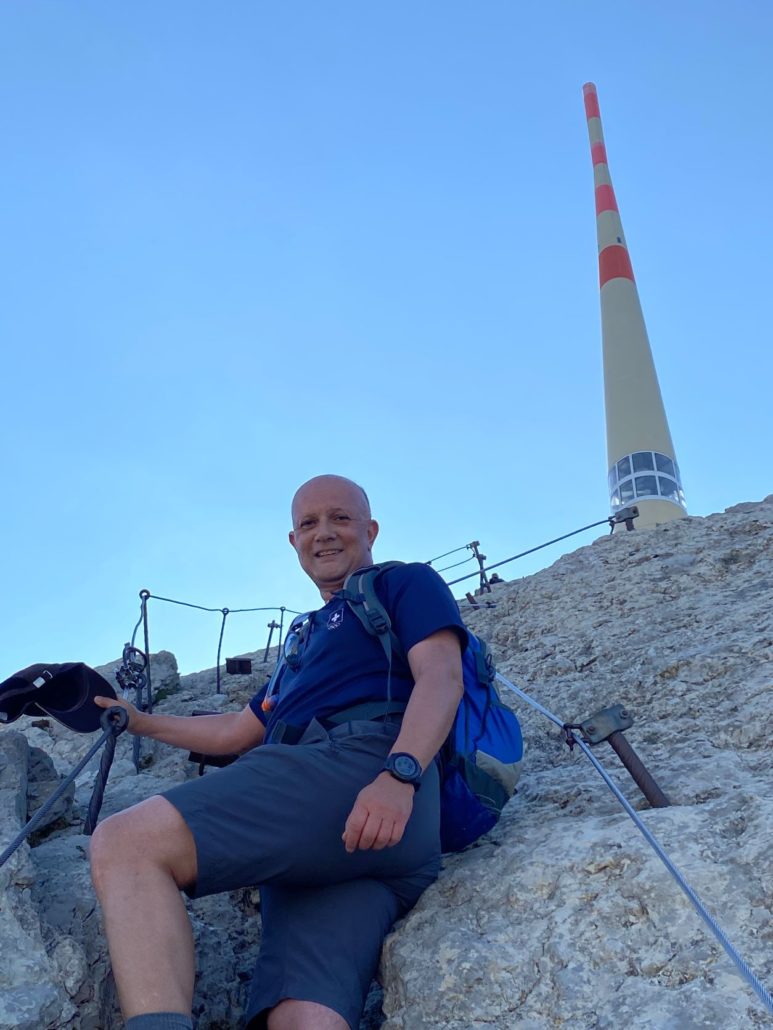In Koblenz verlassen wir den Rhein und die Via Rhenana und folgen nun dem Lauf der Aare. Ein paar Schritte vor dem Betreten der leicht gebogenen Eisenbahnbrücke biegen wir rechts in einen schmalen Weg ein, der uns zum Ufer der Aare führt. Dort wenden wir uns nach links, gegen die Flussrichtung, und passieren kurz danach die Staumauer mit Elektrizitätswerk des Klingnauer Stausees. Diesem folgen wir bis zu seinem Ende bei Döttingen. Danach folgen wir wieder dem Lauf der Aare.
Sehens- & Wissenswertes
| Km 6 | Döttingen. Verschiedene Funde belegen eine Besiedlung während der Jungsteinzeit. Zur Zeit der Römer standen hier zwei Gutshöfe. Beide wurden um 260 n. Chr. von plündernden Alemannen zerstört. Döttingen lag an der römischen Heerstrasse Zurzach – Vindonissa
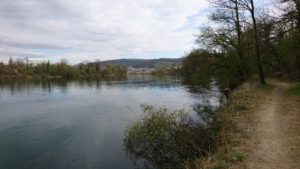 Ab dem Ende des Stausees wandern wir entlang der Aare auf angenehmen Natur- und Kieswegen. |
| Km 9 | Auf der kurz nach Döttingen liegenden künstlichen Aare-Insel steht ein weiteres AKW- Beznau – das 1969 den Betrieb aufnahm. Es ist heute das dienstälteste Kernkraftwerk der Welt.
|
Bei Würenlingen passieren wir das Paul Scherrer Institut PSI, das grösste Forschungsinstitut für Natur- und Ingenieurwissenschaften in der Schweiz.
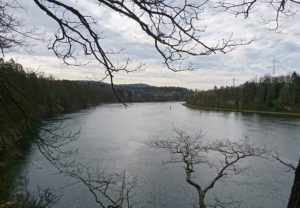
Wir kommen nun im sog. Wasserschloss der Schweiz an. Hier vereinen sich die Flüsse Aare, Limmat und Reuss zur Aare, die dann bei Koblenz in den Rhein mündet. Das Einzugsgebiet dieser Flüsse bedeckt rund 40% der schweizerischen Fläche.
| Km 18.5 | Bis Untersiggenthal folgten wir der Aare, ab hier der Limmat bis Zürich. Das Gebiet war bereits während der Jungstein- und Bronzezeit besiedelt. Die erste urkundliche Erwähnung stammt aus dem Jahr 833. Grundbesitzer waren im 9. Jh das Fridolinsstift in Säckingen, im 11. Jh das Kloster Einsiedeln, im 12. Jh das Kloster St. Blasien, ab 1245 das Kloster Wettingen und ab 1337 das Kloster Königsfelden in Windisch. Windisch war im Besitz der Habsburger, deren Stammsitz etwas westlich von Windisch lag.
|
| Km 27 | Etappenort Baden. Um 14 n. Chr. bauten die Römer in der Nähe von Baden (Aquae Helveticae) das Legionslager Vindonissa. Wegen der Heilwirkung des Thermalwassers errichteten sie Thermenanlagen an der Limmat. Das unmittelbar an Vindonissa angrenzende Dorf Baden, das wahrscheinlich unter militärischer Verwaltung stand, lag am Schnittpunkt bedeutender Verkehrsverbindungen. Die Hauptachse führte von Augusta Raurica (Augst) über Vindonissa (Windisch) nach Vitudurum (Winterthur) und Brigantium (Bregenz). Eine Strasse zweigte in Richtung Turicum (Zürich) ab, und von dort zu den Alpenpässen. Die Römer verliessen anfangs 5. Jh die Gegend. Sie blieb jedoch besiedelt.
Die Eidgenossen eroberten die Stadt 1415. Bis 1798 war Baden eine Untertanenstadt, hatte aber als Kurort und wichtigster Versammlungsort der eidgenössischen Tagsatzungen bis 1712 eine herausragende Stellung. 1714 wurde hier einer der zahlreichen Frieden – Frieden von Baden – zum Ende des spanischen Erbfolgekrieges geschlossen Als Gründungsort (1891) von Brown, Boveri & Cie, heute ABB, ist Baden ein international wichtiges Zentrum der Elektrotechnikbranche. |


